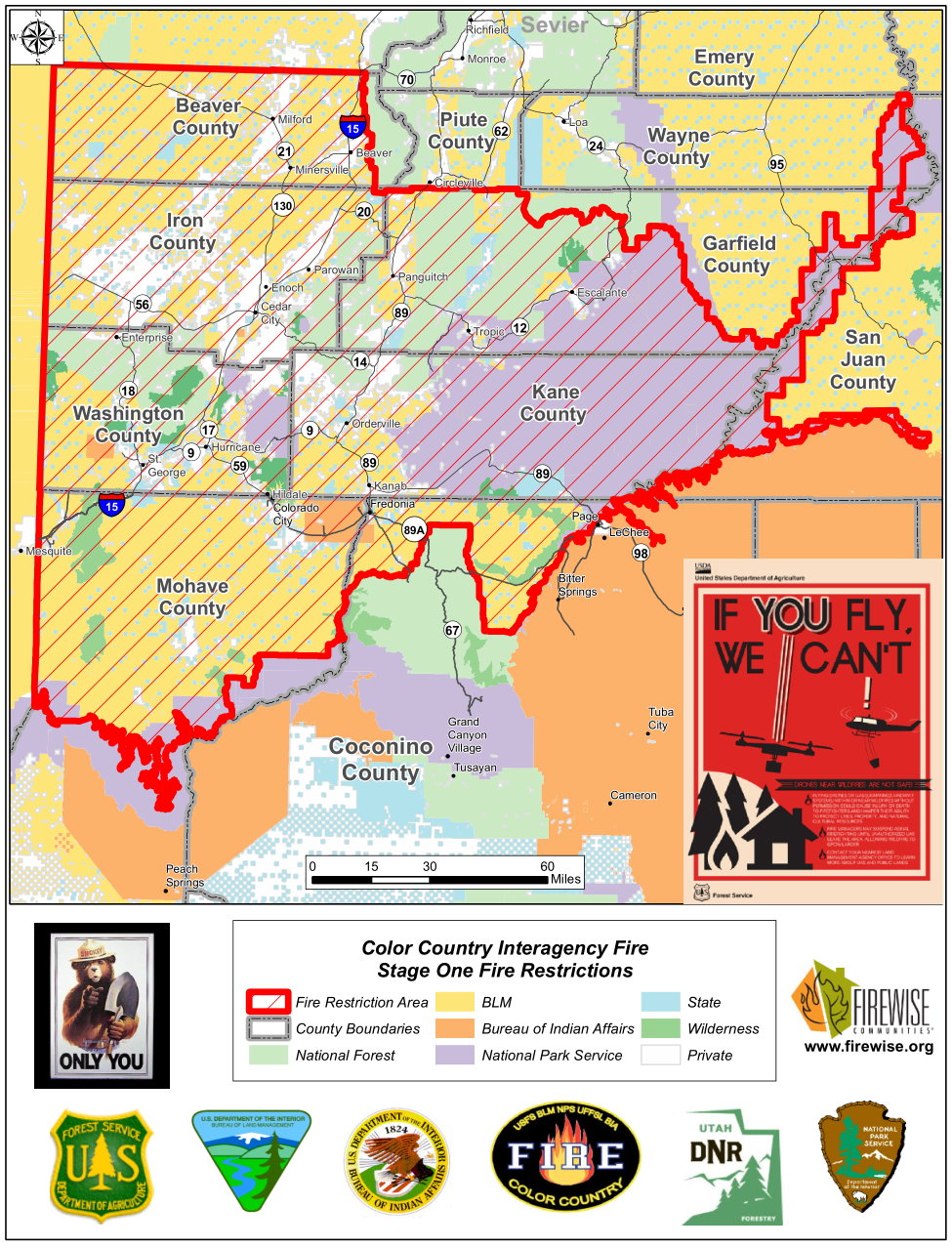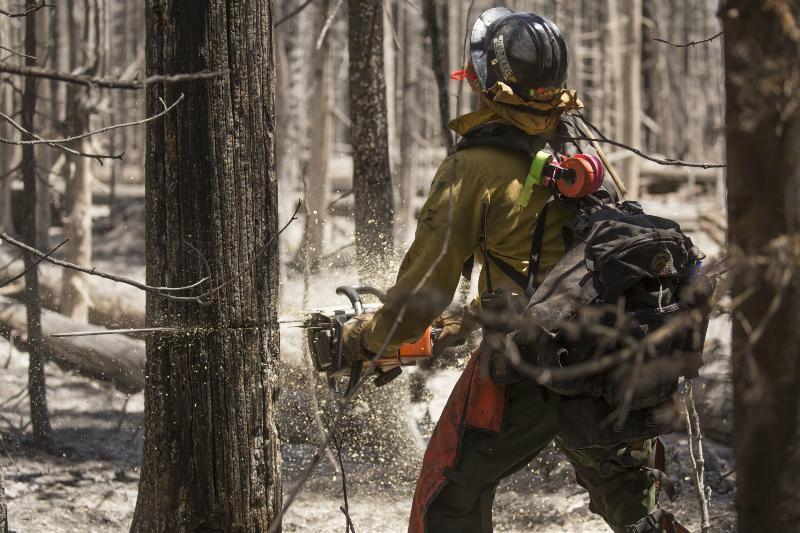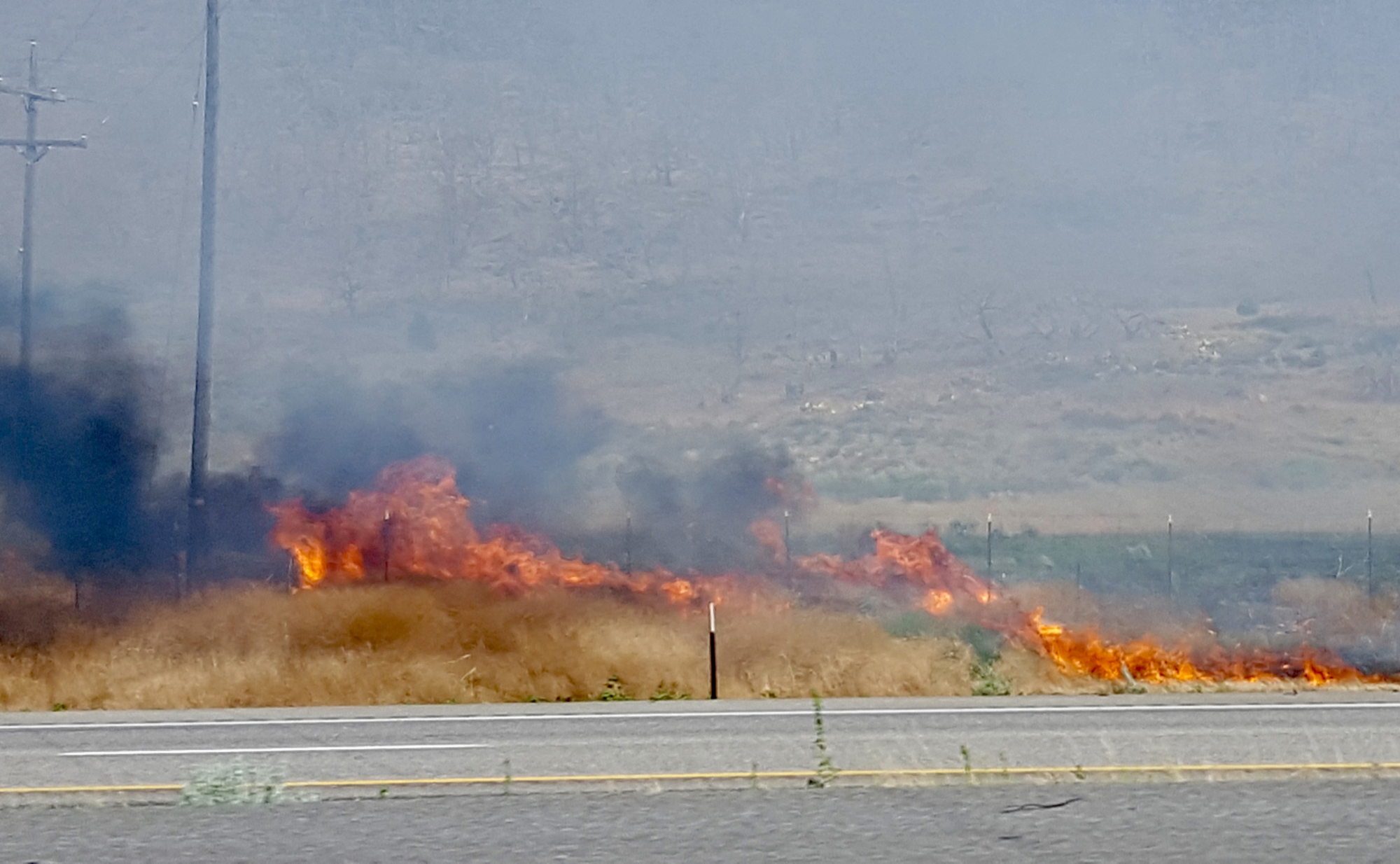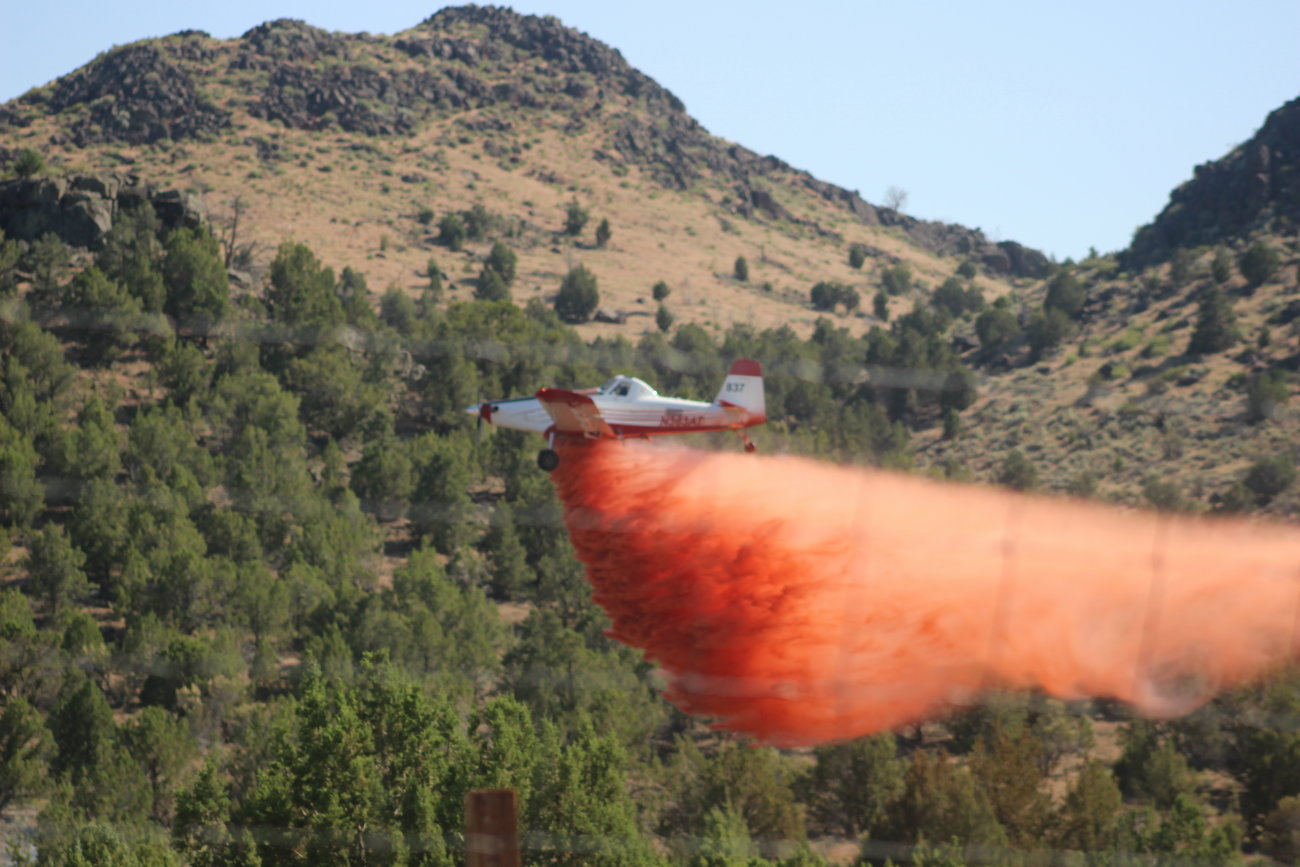
ST. GEORGE – Throughout June and even before then, local, state and federal fire managers have implemented fire restrictions across the region in the hopes it would help curtail human-caused fires this season.
The largest fire burning in Utah – and the United States – right now is the Brian Head Fire, a human-caused fire. Though containment has reached 70 percent as of the 4th of July, the fire has also grown to over 67,000 acres since June 17 when it ignited. The fire was reportedly started by a man using a torch to burn weeds.
Last month, Color County Interagency released expanded fire restrictions for all Kane, Iron and Washington counties, most of Beaver County and parts of Garfield, Wayne and San Juan counties, as well as Mohave and Coconino counties in Arizona.
“Lands not in fire restrictions are becoming increasingly dry and fire danger is increasing daily,” Interagency fire managers said Friday.
“Please ensure your campfire is completely out before you leave and all ignition sources are a safe distance away from vegetation to mitigate unwanted wildfires.”
The restrictions will remain in place until further notice.
Read more: ‘If it can spark, it can cause a fire’: Tips on preventing human-caused wildfires

Impacted areas
The restrictions cover unincorporated privately-owned and all state-administered lands.
Bureau of Land Management
- Utah/Arizona Strip
Dixie National Forest
- Pine Valley, Cedar City, Powell and Escalante Ranger districts.
National Park Service
- Zion National Park, Bryce Canyon National Park, Cedar Breaks National Monument, Pipe Springs National Monument, Glen Canyon National Recreation Area and Rainbow Bridge National Monument.
Bureau of Indian Affairs
- Trust Lands of the Shivwits, Cedar, Indian Peaks and Kaibab Band Reservations.
- Incorporated towns and cities are not included in these restrictions. Contact your local fire department for municipal restrictions.
The following acts are prohibited until further notice
- Igniting, building, maintaining or using a fire, including charcoal and briquettes, outside a fire structure provided by the agency within a designated area is prohibited. Campfires and charcoal fires are prohibited in Zion National Park’s Watchman and South Campgrounds.
- All developed recreation sites, campgrounds, picnic areas and home sites that are maintained and administered by the agency, or home sites where running water is present are allowed. Stoves or grills that are fueled solely by liquid petroleum fuels are also allowed.
-

A firefighter battling the Brian Head Fire cuts a snag, Utah, July 2, 2017 | Photo courtesy of InciWeb, Cedar City News / St. George News Campfires and charcoal fires are allowed at Zion National Park’s Lava Point Campground.
- In Glen Canyon National Recreation Area, campfires are also permitted below the high water mark of the lake in areas devoid of vegetation. Holders of Forest Service Special Use Authorizations are exempt from first restriction; provided such fires are within a fire structure and are within their permitted area.
- It should be noted that abandoned campfires that aren’t completely extinguished are also a concern for fire officials in Utah.
- Improperly extinguished campfires can flare up once more, and with no one around to put it out, a second time they can get out of control. Campfires, even if they appear to be out, should be cold to the touch before leaving them – stir the dirt with water until it is cold.
- Discharging, or using any kind of fireworks on unincorporated private land – is always prohibited on state and federal lands.
- Operating or using any internal or external combustion engine without a spark arresting device properly installed, maintained and in effective working order as determined by the Society of Automotive Engineers (SAE) recommended practices J335 and J350.
- Detonating of explosives, incendiary or chemical devices, pyrotechnics, or exploding targets, or tracer ammunition – always prohibited on federal land.
- Cutting, welding or grinding of metal in areas of dry vegetation.
- Smoking except in an enclosed vehicle or building, or a developed recreation site or areas of a minimum of three three feet in diameter cleared down to mineral soil.
Violation of restrictions on federal lands is punishable as a Class B misdemeanor by fine, imprisonment or both. Violators also may be held personally responsible for reimbursement of fire suppression costs.

Southern Utah: Restrictions in Washington, Iron, Kane Garfield, Beaver and San Juan counties
- Setting, building, maintaining, attending or using open fires of any kind, except within the facilities designated for them in improved campgrounds, picnic areas or home sites where running water is present.
- Smoking, except within an enclosed vehicle, trailer or building, a developed recreation site or while stopped in an area that is paved or free from dry vegetation.
- Discharging or using any kind of fireworks, tracer ammunition or other pyrotechnic devices including exploding targets.
- Cutting, welding or grinding metal in areas of dry vegetation.
- Operating a motorcycle, chainsaw, ATV, or other small internal combustion engine without an approved and working spark arrestor.
Any of the above acts is a violation of state law and punishable by up to six months in jail and a fine of up to $1,000.
The following persons are exempted from the above prohibitions:
- Persons with a permit or waiver specifically authorizing a specified act at a specific location.
- Any on-duty firefighter in the performance of an official duty.
Additional fire restrictions for Utah overall can be found on UtahFireInfo.gov.
Arizona: Restrictions in Mohave and Coconino counties
Additional fire restrictions for these counties and the Arizona Strip went into affect June 30.
Mohave County
Mohave County has banned most outdoor fires, campfires and use of permissible consumer fireworks in unincorporated public and private areas of the county.
It’s the third such county ban since 2013, the year when Ordinance No. 2013-04 was created to allow officials to take such measures.

The ordinance also established fire ban zones and penalties for violating the prohibitions. The ban applies to open fires, campfires and permissible consumer fireworks.
“It’s done to raise public awareness and prevent people from conducting hazardous practices,” said Byron Steward, the county’s Risk and Emergency Management Coordinator. “There’s a very high fire danger this year.”
Ongoing drought, extremely dry vegetation and high winds have combined to create serious fire risks in these locations, he said. These conditions began in lower elevations of the county and have spread to higher ground.
“A lot of fires started by fireworks are (because of) illegal fireworks,” he said. “And one fire could potentially stress our resources.”
Steward pointed out that people caught violating the ban could be fined up to $750 and/or imprisoned for up to four months.
How long the ban will last depends on the extent of rainfall during monsoon season, which typically begins in mid- to late-July.
“The ongoing drought has increased our fire threat over the past 10 years,” Steward said.
A major incident in this part of the county was the Willow Fire in Mohave Valley. It burned about 6,000 acres and resulted in the loss of more than a dozen homes in August of 2015.
The Bureau of Land Management will start similar restrictions on its land within Mohave County on Friday.
The ban started this past Friday and could end up lasting until September, though its duration depends on how much moisture is produced during this summer’s monsoon season.
Coconino County
The County has been in Stage 1 fire restrictions since June 15. The county is enacting Stage 2 restrictions due to forecast weather and very high fire danger. Restrictions are in coordination with Coconino National Forest and the Arizona Department of Fire and Forestry Management.

The following restrictions apply on County public lands, as well as private lands in the unincorporated areas of the County. During Stage 2, the only combustion open fire and campfire allowed are listed below:
1. By persons with a written permit or variance.
2. For personal use of cigarette or other tobacco smoking medium when used inside an enclosed
vehicle or building only.
3. For emergency repair of public utilities and railroads and other health and safety mitigation
measures when operated by a public utility or railroad and implemented in accordance with an
approved agency plan.
4. By any Federal, State or local officer or member of an organized rescue or firefighting entity in the performance of an official duty.
5. By persons whose open fire is the result of a device manufactured for the purpose of cooking of
food, fueled by liquid petroleum or LPG fuels that can be turned on and turned off (for example a
gas grill) when used in an area that is free of combustible materials and vegetation. This does not
include Liquid fuel or LPG fire rings.
6. By persons operating internal combustion engines with spark arresting devices when the use is
for common household-only activities such as landscaping and property maintenance and repair.
7. By persons operating generators or pumps with an approved spark arresting device in an area
that is barren or cleared of all overhead and surrounding combustible materials within three
feet of the device.
8. Persons engaged in industrial and ranching operations with a permit or variance.
Unless allowed by an exception above, in addition to stage one common prohibited activities (including
open fire, campfires, fireworks, open smoking and use of exploding targets and tracer round
ammunition), prohibitions now include all open fire, campfires, open smoking, outdoor mechanical and
industrial operations such as welding and use of acetylene, and operating motorized vehicles off
designated trails and roads.
Residents and visitors are asked to use their best judgment when considering whether to engage in any activity that could spark a fire. Residents and visitors are reminded that they can be held legally responsible for causing any wildfire.
Additional information on fire restrictions affecting the Arizona Strip, Mohave and Coconino counties can be found at: https://firerestrictions.us/az/
Resources
- ‘If it can spark, it can cause a fire’: Tips on preventing human-caused wildfires.
- Utah campaign against human-caused fires: It Only Takes One Spark To Start A Wildfire.
- Utah Fire Info website.
- Arizona fire restrictions.
Email: [email protected]
Twitter: @MoriKessler
Copyright St. George News, SaintGeorgeUtah.com LLC, 2017, all rights reserved.
Every fire started in the state from here on out we should just say is the fault of “evil, godless, librul treehugger environmentalists”
Do they have classes on how to not be a stupid hillbilly? Lesson 1, don’t burn weeds with a torch in the middle of summer.
Restrictions are definitely necessary, but even more necessary is enforcement. I know with illegal fireworks so prevalent around the 4th, it is typical for civil authorities to “look the other way”, but we don’t want to end up a “statistic” like the 68,000 acres that just went up north of us